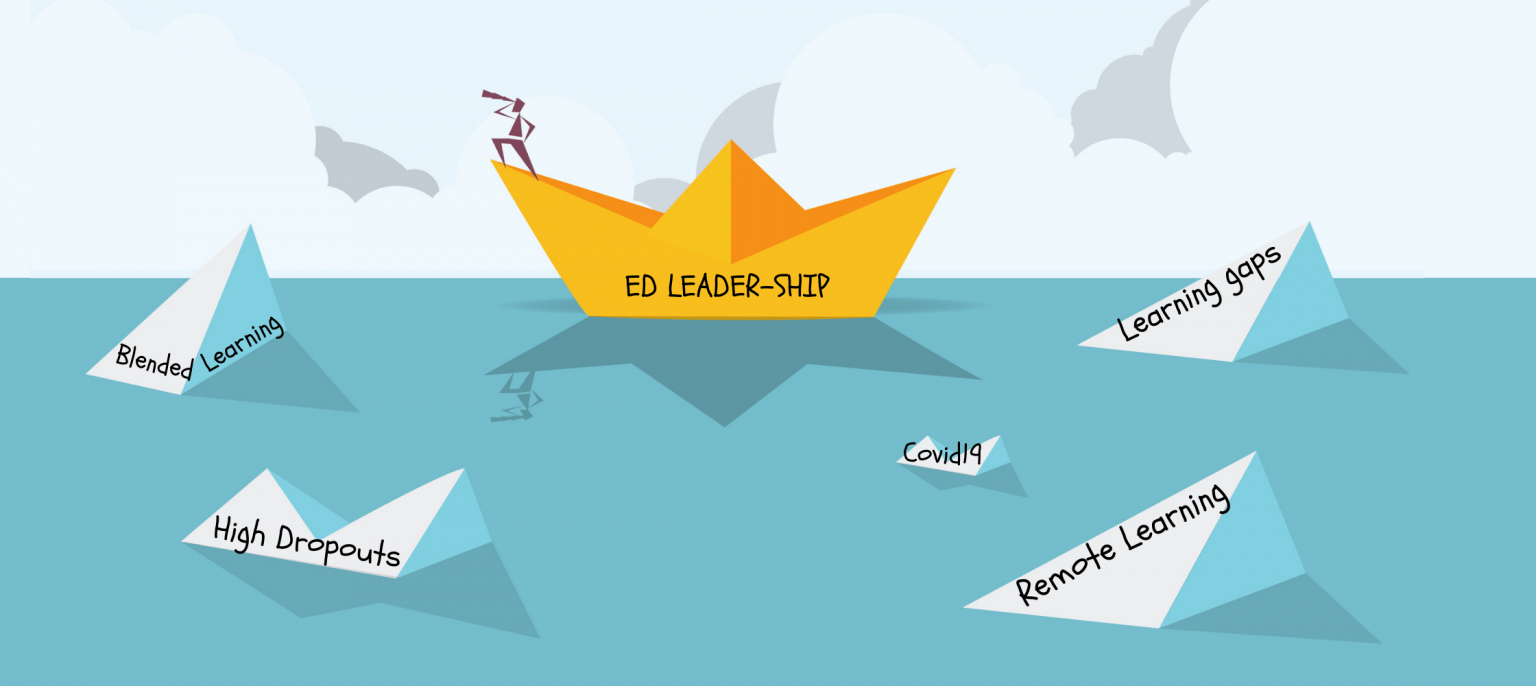The current situation due to COVID-19 pandemic makes it even more challenging. Our brave school leaders are captains of a ship who are sailing amidst rising storms in an unknown sea.
National Education Policy 2020 has laid down a roadmap to spearhead changes in the coming years in the education landscape of the country. It identifies key areas to look at for K-12 education including early childhood education, foundational literacy and numeracy, universal access, curriculum and pedagogy, assessments, and more.
Implementation of the policy will involve a significant effort in managing the changes towards our desired future – improved structures, improved capacity building and improved learning outcomes for children. Easier said than done, change management is always difficult. Mindset and culture shifts are hard to orchestrate. The current situation due to COVID-19 pandemic makes it even more challenging. Our brave school leaders are captains of a ship who are sailing amidst rising storms in an unknown sea.
We are up against evolving challenges
There are five enhanced challenges, as we work towards improving learning outcomes, illustrated below.
(1) The first is how to build a sense of shared purpose to excel with novel transformations and initiatives, which is to be done in the middle of all the unfolding uncertainty.
(2) Second is how to inspire school teams to plan and make improvements, how to develop grit in the face of disruptions which have now become the order.
(3) Third is how do we strengthen the capacity of the school teams to sense, make sense, learn and improve. We need to understand where different stakeholders (teachers, parents, children, etc.) are in their journey in the system, what needs to be improved, when it has to be improved and with discipline.
(4) Fourth is how to energize parent participation, taking them into confidence, even as they themselves are under livelihood stress and worry about family’s sustainability.
(5) Lastly, the end users of these transformations – the children, we have to figure out how to improve their mental well-being, as they grow up under isolation and change.
Leadership is key to show the way forward
The time to change and to improve is now, we don’t have a moment to lose. However, in these emerging circumstances, we have to be more thoughtful and supportive. The culture change or improvement has to be driven by the education system leadership, across all levels from schools, to districts, to states and at the national level.
Aristotle is famous for having said, “We are what we repeatedly do. Excellence, then, is not an act, but a habit.”
Once there is an intent for excellence, driven by leadership, technology can help convert this intent into a daily habit for everyone across the education ecosystem.
How can technology help
As we connect, and strive for excellence in all aspects of our day to day routines, technology can augment the capability of our school leaders in many ways. Following are five of them:
- Access: Resources and expertise that we cannot reach otherwise
- Share: Our knowledge and expertise with others in our community
- Filter: Use data and analytics to focus on what is important for children
- Interact: With mentors and guides who can help us become better
- Create: New ways to achieve learning outcomes using our imagination
That said, education leaders across the system have to make an effort to improve digital literacy and become better at leveraging technology to achieve the objectives of our National Education Policy. The changes will be brought about through clarity on how to create a nurturing environment for our children; with the capacity to sense, make sense, learn and improve, repeatedly, every day and courage to go beyond the normal and strive for excellence under uncertainty. Change has to happen everyday, not once in a while.
– Sanjay Purohit
Excerpts from the CBSE panel discussion, to view the full video click here.




